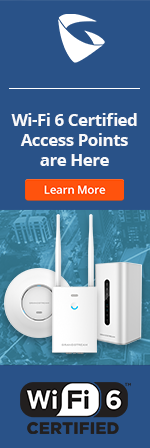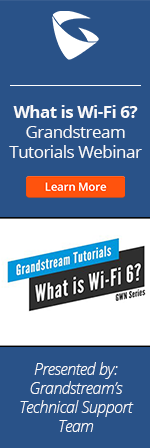- Home
- Support
- Common Questions
- FAQ
- Common Configuration Questions
- CloudUCM
- GSC3510/3505
- GVC3220
- GDMS Grandstream Device Management System
- IPVideoTalk Service
- UCM6300 Series IP PBX and Wave
- WP810 WiFi Cordless
- WP820 WiFi Cordless
- GVC3210
- GWN series
- GAC2500
- Wave Lite
- GVC3200/GVC3202
- GVR355X NVR
- GVR3552 NVR
- GVR3550 NVR
- GXV3240/3275 IP Multimedia Phones
- GXP2130/2140/2160 IP Phones
- DP715/710 Series
- DP720/750Series
- HandyTone Series
- BudgeTone Series
- GXP Enterprise Phone Series
- GXP2200 Enterprise Multimedia Phone for Android
- GXV3140 IP Multimedia Phone
- Basic Installation and Settings
- Registering the Device
- Basic Features
- Personalize
- External Devices
- Making/Receiving Calls
- Call Features
- Voice and Video Mail
- GXV3175 IP Multimedia Phone Touchscreen
- GXV350x IP Video Encoder
- GXW IP Analog Gateway Series
- UCM6100 Series
- GXP2000 Enterprise Phone
What is an Outbound proxy? Should I put an Outbound proxy in the field?
An Outbound proxy is mostly used in presence of a firewall/NAT to handle the signaling and media traffic across the firewall. Generally, if you have an outbound proxy and you are not using STUN or other firewall/NAT traversal mechanisms, you can use it. However, if you are using STUN or other firewall/NAT traversal tools, do not use an outbound proxy at the same time.
Can I configure SKYPE or IAX protocol on any Grandstream device?
No, unfortunately both SKYPE and IAX use a proprietary protocol while all Grandstream products follow the SIP protocol Version 2.0 RFC 3261.
What data range we should put for Layer 2 / Layer 3 QoS?
Layer 2 QoS - 802.1q VLAN 802.1p priority
VLAN tag has 12 bits so the value range is from 0 - 4095. 0 means no VLAN
Priority value has 3 bits so the value range is from 0 - 7
Layer 3 QoS - DSCP
It has 6 bits with the range from 0 to 63.
What if my SIP URI domain is different from the SIP proxy server FQDN (Fully Qualified Domain Name)?
With firmware 1.0.3.60 and later, you can put the your SIP URI domain name into the SIP Server field, and put the actual sip server FQDN into Outbound Proxy field. The phone will use the domain name in SIP Server as part of SIP URI but send and receive SIP messages through the SIP proxy server defined in the Outbound Proxy field.
What is Early Dial? Should I use it?
When you dial a number, if you do not press the "Dial" ( "Redial") or "#" key if it is configured to function as the "Send" key at the end of your dialed string, the phone will wait for about 4 seconds before timeout and then sends the actual INVITE message. If you set "Early Dial" to be YES, then the phone will attempt to send out INVITE at each key input using the entered dial string collected so far. If the SIP server supports 484 Incomplete Address response, the phone will keep trying with each new key entry until the complete dialed string is entered. This will essentially eliminate the 4-second wait time mentioned above.
Please note that this option can be used ONLY when the SIP server supports 484 Incomplete Address response. Otherwise, any other negative responses from the SIP server (such as 404 Not Found) will cause immediate termination of the call.
What is STUN? Should I use it?
STUN stands for Simple Traversal of UDP over NAT. It is a protocol which enables an IP phone to detect the presence and type of NAT behind which the phone is placed. An IP phone that supports STUN can intelligently modify the private IP address and port in its SIP/SDP message by using the NAT mapped public IP address and port through a series of STUN queries against a STUN server located on the public Internet. This will allow SIP signaling and RTP media to successfully traverse a NAT without requiring any configuration changes on the NAT.
STUN presents a working solution for most NATs that are not symmetric NAT, e.g., most of the SOHO routers have non-symmetric NAT and in this case, it is OK to use STUN. However, STUN does NOT work with symmetric NAT and if your routers have built-in symmetric NAT, do not use STUN.
Note: NOT ALL SIP PROXY SERVERS WILL WORK WITH A STUN TRANSLATED SIP MESSAGES, PLEASE CONSULT YOUR SERVICE PROVIDER FOR DETAIL.
What is the difference between "User ID" and "Authentication ID"?
User ID is the user part of the SIP address of the phone and this is usually the information displayed as Caller ID on the LCD. e.g., typically it is a phone number or extension number or a user's name. Authentication ID is an ID used strictly for authentication purpose when the phone attempts to contact the SIP server. This may or may not be the same as User ID.
What number should I use for "Voice Frames per TX"?
It depends on what codec you choose and balance between bandwidth utilization and impact of packet loss. The bigger this value, thehigher bandwidth utilization because more voice frames are packed into the payload field of a UDP/RTP packet and thus the network header overhead would be lower. However, the impact of a packet loss on perceived voice quality will be bigger.
- For PCMU/PCMA, the default is 2 and max is 10
- For G723, the default is 1 and max is 32
- For G726-32, the default is 2 and max is 20
- For G729, the default is 2 and max is 64
- For G728, the default is 4 and max is 64
Which NTP server can I use?
By default, the NTP server is set to either "time.nist.gov" or "us.pool.ntp.org". If that or your own NTP server does not work, try to select an NTP server from following link: http://www.eecis.udel.edu/~mills/ntp/servers.html or you can find more info from www.ntp.org.





